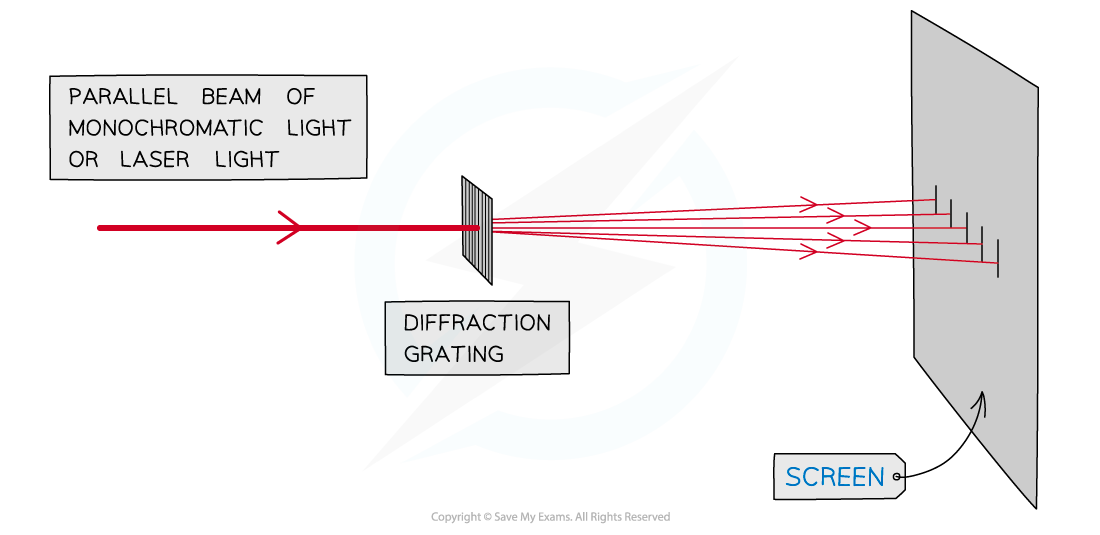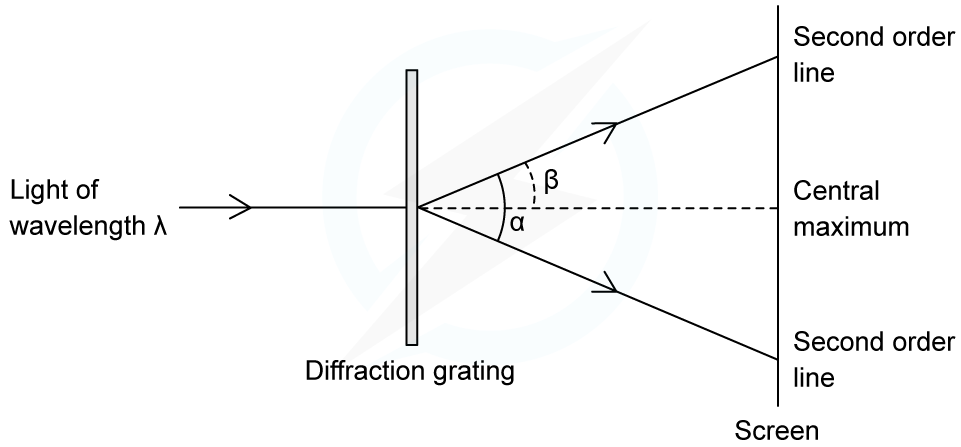The Diffraction Grating Equation (Edexcel International A Level (IAL) Physics) : Revision Note
The Diffraction Grating Equation
A diffraction grating is a plate on which there is a very large number of parallel, identical, close-spaced slits
When monochromatic light is incident on a grating, a pattern of narrow bright fringes is produced on a screen

Diagram of diffraction grating used to obtain a fringe pattern
The angles at which the maxima of intensity (constructive interference) are produced can be deduced by the diffraction grating equation

Diffraction grating equation for the angle of bright fringes
Exam questions sometime state the lines per m (or per mm, per nm etc.) on the grating which is represented by the symbol N
d can be calculated from N using the equation

Angular Separation
The angular separation of each maxima is calculated by rearranging the grating equation to make θ the subject
The angle θ is taken from the centre meaning the higher orders are at greater angles

Angular separation
The angular separation between two angles is found by subtracting the smaller angle from the larger one
The angular separation between the first and second maxima n1 and n2 is θ2 – θ1
Orders of Maxima
The maximum angle to see orders of maxima is when the beam is at right angles to the diffraction grating
This means θ = 90o and sin θ = 1
The highest order of maxima visible is therefore calculated by the equation:

Note that since n must be an integer, if the value is a decimal it must be rounded down
E.g If n is calculated as 2.7 then n = 2 is the highest order visible
Worked Example
An experiment was set up to investigate light passing through a diffraction grating with a slit spacing of 1.7 µm. The fringe pattern was observed on a screen. The wavelength of the light is 550 nm.

Calculate the angle α between the two second-order lines.
Answer:

Examiner Tips and Tricks
Take care that the angle θ is the correct angle taken from the centre and not the angle taken between two orders of maxima.

You've read 0 of your 5 free revision notes this week
Sign up now. It’s free!
Did this page help you?
